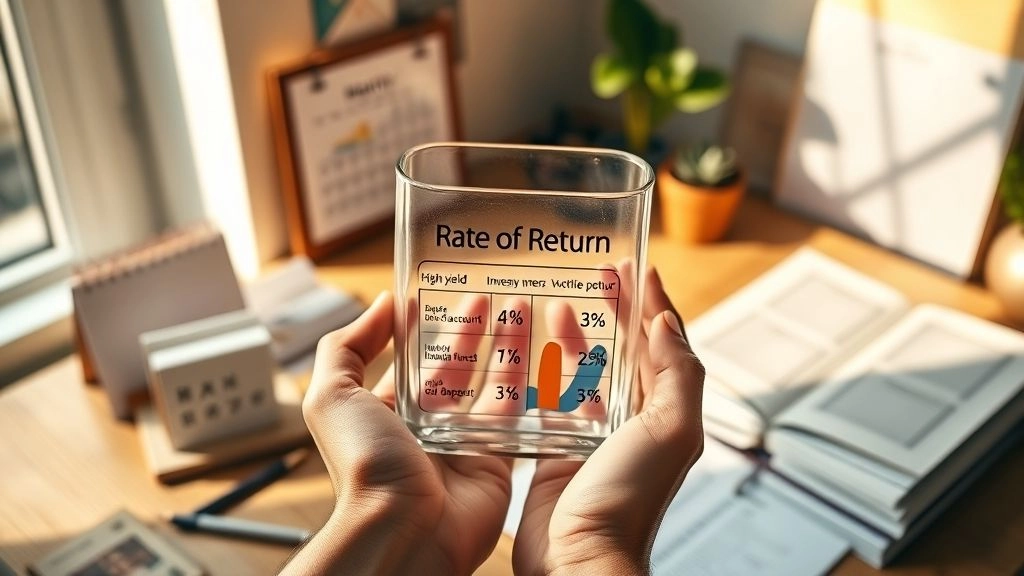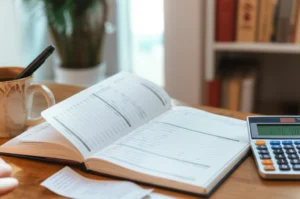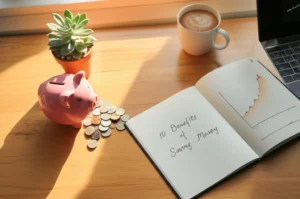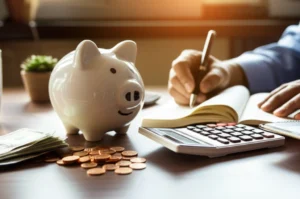Okay, imagine this: you toss a hundred bucks into a savings jar every month. Years later, you peek inside and—surprise!—there’s more than you expected. That’s the magic of money growing over time, and at the heart of that magic lies the “rate of return.” But what exactly does that phrase mean? And why should you care, especially if you’re all about stretching every dollar and mastering your budget?
Let’s skip the boring textbook stuff and get straight to the good stuff. I want to show you how understanding the rate of return can turn your saving and investing habits up a notch—without turning you into a finance major overnight. Ready? Let’s dive in.
What It Means
Why Should You Even Care?
Here’s a little secret: “rate of return” is a phrase used to describe what aspect of investing? Simply put, it’s the percentage that tells you how much your money grew—or shrank—over a certain time. Say you invested $1,000, and a year later it’s worth $1,100. Your rate of return? That’s 10%. Easy, right?
Now, I know what you’re thinking. “I’m just trying to save, not become a Wall Street hotshot.” But knowing this number helps you compare where to put your hard-earned cash. Should it stay in the checking account? Moved to a high-yield savings? Or maybe dipped into some index funds? The rate of return tells you how well your choice is working for you.
It’s sort of like checking which coupon or sale gives you the biggest bang for your buck before you buy—except here, you’re choosing where your money can grow the fastest without backbreaking risk.
Real-Life Snapshot: Bank Account Showdown
| Account Type | Initial Deposit | Rate of Return | Value After 1 Year |
|---|---|---|---|
| Basic Savings | $1,000 | 0.5% | $1,005 |
| High-Yield Savings | $1,000 | 4.5% | $1,045 |
That extra 4% doesn’t look like much… until you realize it can cover a solid week’s worth of groceries every year. And hey, starting small is perfectly fine—because it’s all about momentum.
Feeling curious? Check out interest paid on interest previously earned—that’s one of the secret sauces for growing your savings faster.
Crunching The Numbers
Is Calculating Rate Of Return Hard?
Honestly? Not at all. Here’s the simple recipe: take what your investment is worth now, subtract what you started with, add any income you earned (like dividends or interest), then divide by what you initially put in. Multiply by 100 to get a percentage.
So, say you bought some stock for $1,000, and now it’s worth $1,200, plus you got $50 in dividends. The math is:
($1,200 – $1,000 + $50) ÷ $1,000 × 100 = 25%
From there, you’ll know your money’s working for you at a 25% rate of return—which, frankly, is pretty solid!
If it feels a bit abstract, don’t stress. This links nicely with in the five foundations what is the third foundation, a reminder that smart money habits build up before diving into investments.
Nominal versus Real: What’s the Difference?
Quick heads up—sometimes you’ll hear about “nominal” and “real” rates of return. Nominal is just the raw percentage—doesn’t consider inflation sneaking up on your buying power. Real rate of return adjusts for inflation, showing how much you truly gained in terms of what your dollars can buy.
Because, let’s be honest, a 5% return doesn’t mean the same if prices jump 3% a year. That’s why budgeting smartly and considering inflation is a must.
Big Gains, Small Changes
Can Being Frugal Actually Boost Your Returns?
Oh yes! You know the saying, “a penny saved is a penny earned”? Well, in investing terms, it might be more like “a penny saved—and invested—means many pennies earned.” Before growing your savings with investments, you need a rock-solid base:
- Why is it important to make an emergency fund your first financial priority? Because it stops a surprise expense from wiping out your progress.
- Building that fund taps right into in the five foundations what is the third foundation, your financial safety net.
Once you’re covered, small daily wins add up. Cut a subscription here, cook dinner at home more often, and redirect that saved cash into investments with decent returns.
The three reasons to save money are simple: security, opportunity, and peace of mind. The rate of return is just the tool that helps those savings work harder for you.
Simple Table: Beginner-Friendly Investment Options
| Investment | Approx. Avg. Return | Risk Level | Good For |
|---|---|---|---|
| Savings Account (High Yield) | 4% – 5% | Low | Emergency fund, starters |
| Index Funds | 7% – 10% | Medium | Long-term growth |
| Certificates of Deposit (CDs) | 3% – 6% | Very low | Lock-up savings |
One quick heads-up: if you make a late credit payment, you might see the lender add fees that chip away at your profits—so stay on top of those bills. Pro tip: automate when you can!
Returns And Budgeting
How Does This All Fit Together?
Honestly, rate of return is just one piece of the frugality puzzle. Know your numbers, yes—but also give yourself room to breathe. Sorting out your budget, building an emergency fund like the third foundation teaches, and making sure your day-to-day spending aligns with goals—it all works together.
Here’s a quick thing I learned the hard way: your returns don’t matter if you lose money paying extra interest or fees elsewhere. The balance between saving, investing, and paying off debts is the secret sauce.
Personal Finance Hack: Track Your Rate of Return
Every quarter, glance at your investments (or high-yield accounts) and calculate your rate of return. It’s like checking your car’s MPG—seeing where you’re efficient and where you’re wasting fuel. Plus, it feels awesome to see those percentages climb, even if it’s just a few points.
Let’s Wrap This Up
So, there you have it. “Rate of return” is just a fancy phrase that tells you how well your money grows in investments—but it’s so much more than numbers. It’s about understanding your financial choices, feeling empowered to shift your habits, and watching your goals come to life.
Remember: before chasing high returns, get that emergency fund set up—a big part of in the five foundations what is the third foundation. Then, use your budget as your compass. Small wins stack up, especially when those wins are boosted by compounding and smart returns (don’t forget to peek at interest paid on interest previously earned).
Now, here’s your friendly challenge: grab last month’s bank or investment statement right now. Find your rate of return. Look at where you might squeeze a bit more from your budget—trim those sneaky expenses. Move $20 or $50 extra into a high-yield account or an investment that suits your style. Little by little, that’s how your financial story turns into a win.
Got a story or questions? Drop them below—I’m all ears. Let’s grow this frugal journey together.













